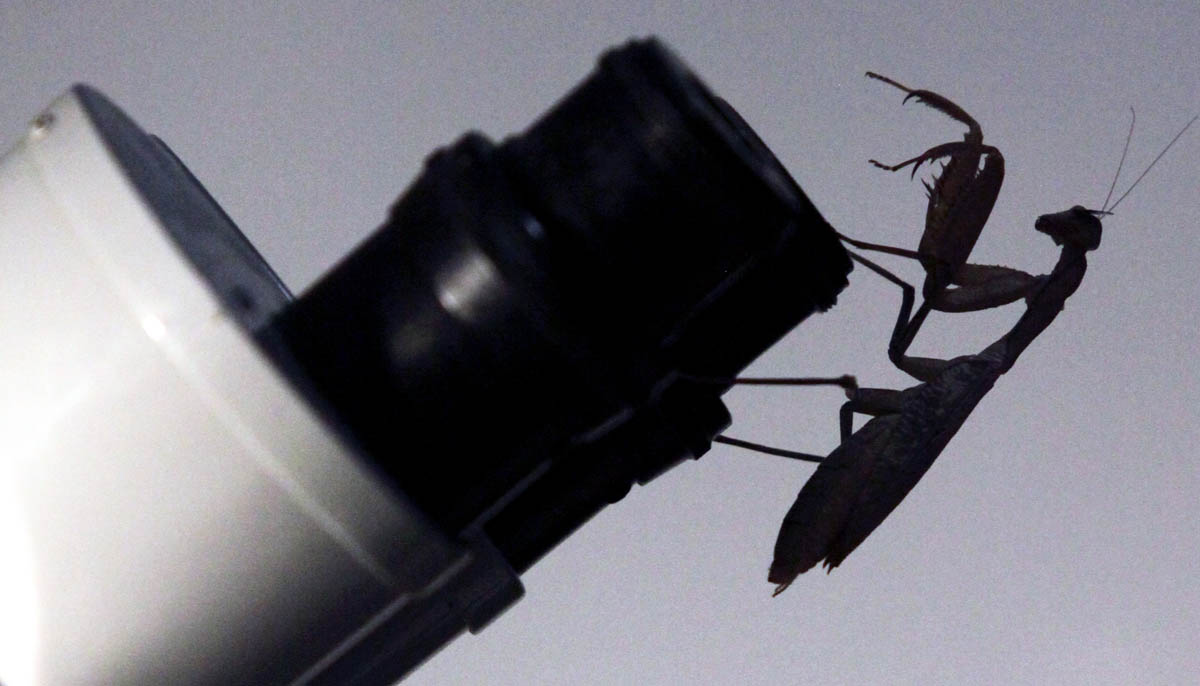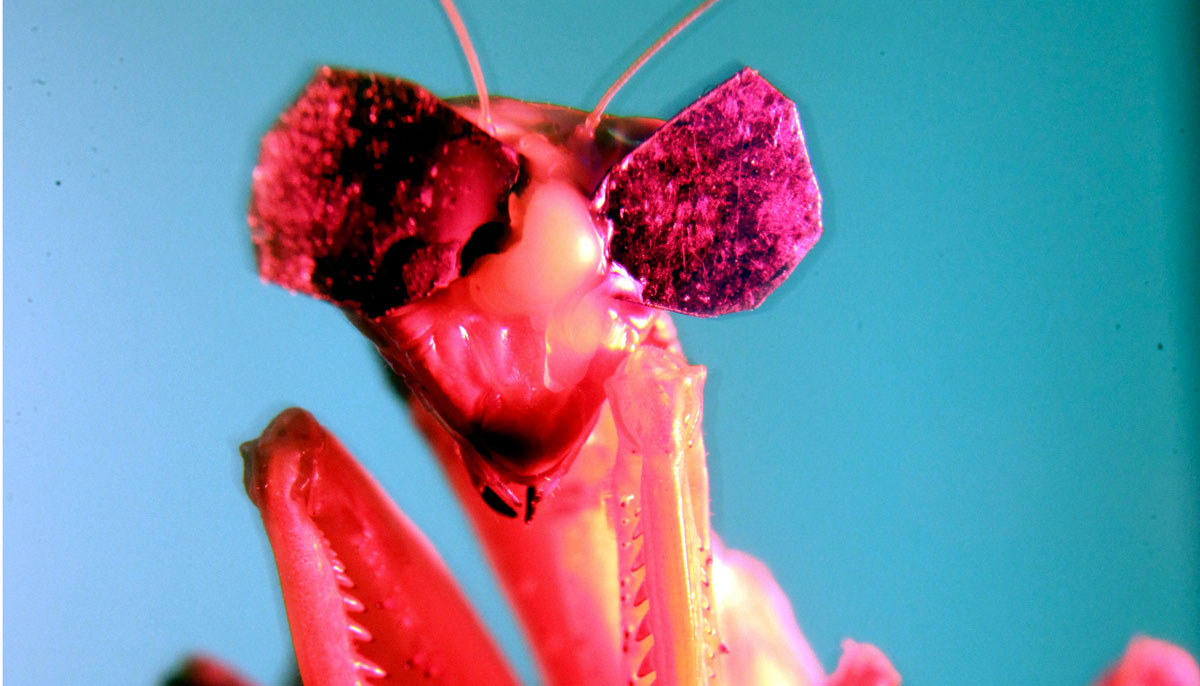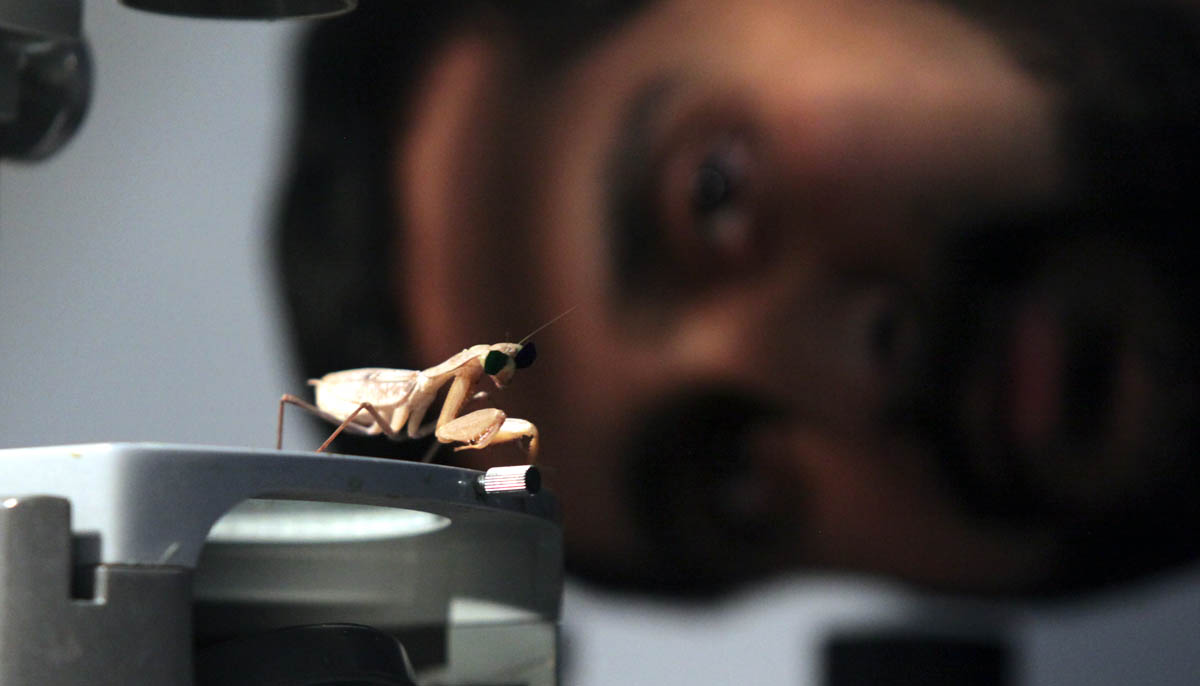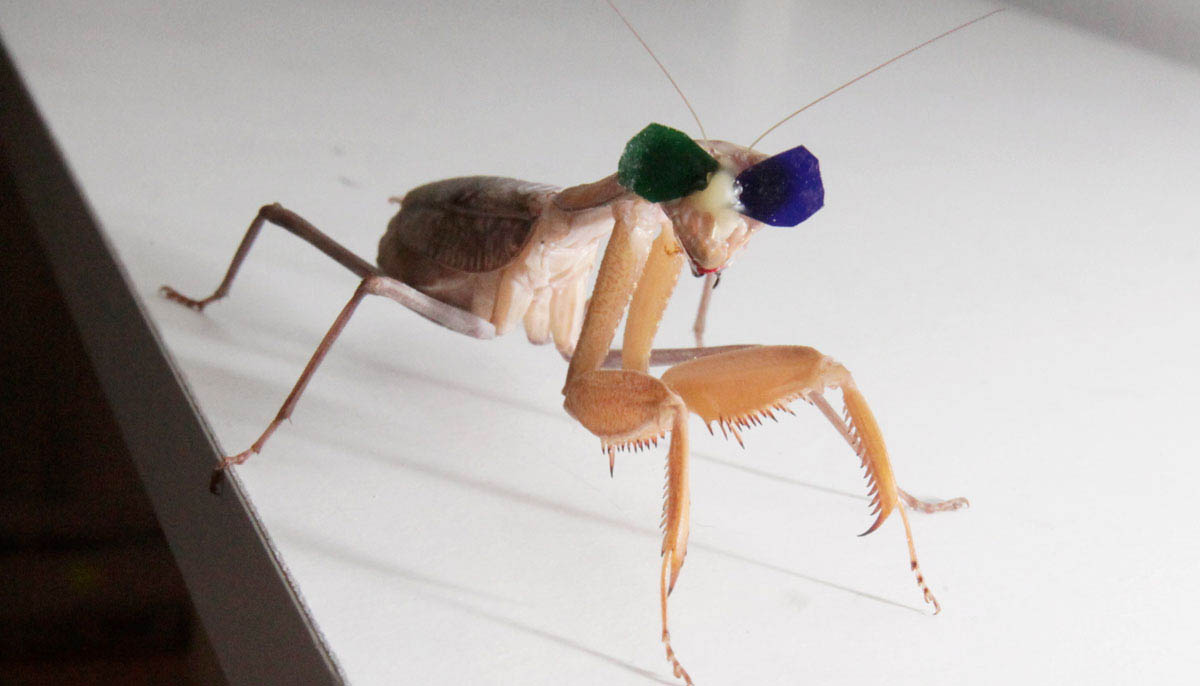3D glasses for mantises HOLD
Awarded to the team from the Institute of Neuroscience for innovative research in Science, Technology, Engineering and Maths subjects, the work was recognised for capturing the imagination of the public.
In particular the images were praised for encapsulating the research that developed miniature glasses to prove that praying mantises use 3D vision.
The team comprised Professor Jenny Read, Dr Vivek Nityananda, Dr Ghaith Tarawneh and Dr Ronny Rosner.

World-wide attention
From Brazil to Japan, National Geographic to Nature, the images of the mantises wearing tiny old-school green and blue lenses have spanned the world.
The hard science behind the pictures, published in Scientific Reports and Philosophical Transactions of the Royal Society, demonstrated 3D vision in mantises and the technique to effectively deliver virtual 3D stimuli to insects. The overarching goal of the Institute of Neuroscience team is to understand how humans and other animals see.
Better understanding of the simpler processing systems of mantises helps us understand how 3D vision evolved, and could lead to new computer algorithms for 3D depth perception.
Most knowledge about 3D perception comes from vertebrates, but this research confirmed that the mantis, an invertebrate, also has 3D vision. The results, the photos and the video of the mantis in action captured the public – and media – imagination.
The interdisciplinary team behind the research included a neuroscientist, behavioural ecologist, physiologist and a computer engineer. Their challenge was to develop a method of delivering 3D stimuli to a mantis. After several attempts with different techniques including mirrors and polarization filters, the team hit on the elegant solution of colour-based 3D glasses.
In the experiments, mantises fitted with tiny glasses were shown videos of simulated bugs on a computer screen. The mantises didn’t try to catch the bugs when they were in 2D. But when the bugs were shown in 3D, apparently floating in front of the screen, the mantises struck out at them. This proves that mantises do indeed use 3D vision.
The team established this method using diverse tools: spectral transmission measurements, electrophysiology and behavioural experiments. The method has revolutionized the study of insect 3D vision, opening up a whole new research area with implications in fields as diverse as evolutionary biology and robotics.

Spreading the word
Outreach has been an integral part of the project with results being communicated worldwide from Japan to Uruguay. The team gave media interviews to shows including BBC Breakfast, ITV News and the Today programme. They exploited their diversity – native languages included French, German, Arabic and Hindi – to reach out worldwide. The engagement strategy included innovative approaches such as children’s comics and sculpture.
Dr Nityananda was even awarded a Great North Museum Fellowship for Public Engagement for his outreach efforts which he used to further communicate the research in an exhibition and an animation film. The results were presented nationwide at museums and events from Bradford to London.
Most recently, the project engaged the public with the results through a collaboration with a theatre group, Cap-a-Pie. This developed into a children’s play funded by Wellcome which had a successful run over several weeks.
This project is an outstanding combination of ground-breaking research opening up a new area, promising impact and creative outreach.
Photos from the project of the mantises can be downloaded for use, with the credit to Newcastle University, UK.
You can download images from the photo gallery. Please credit Newcastle University.
You can download images from the photo gallery. Please credit Newcastle University.







